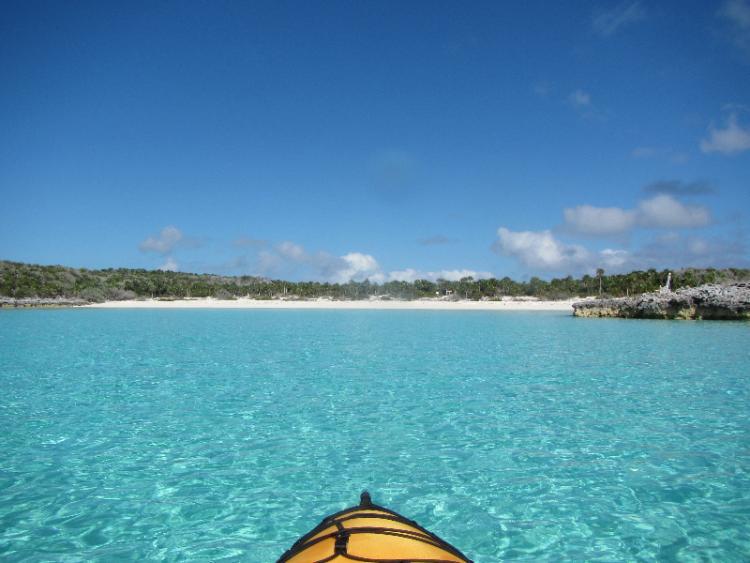The Advantages of Sailing with Paddle-Powered Craft
It’s hard for me to believe that I began my sabbatical a year ago. At that time, since we would only be “temporary” cruisers, Rick and I had a naïve wish not to be that kind of cruiser – i.e. the type of cruiser whose boat looks like a floating version of the Beverly Hillbillies’ truck. To that end, we gave up our entire aft cabin for storage and purchased an inflatable kayak and an inflatable stand-up paddleboard, both of which initially lived in the aft cabin.

Over a not very long time, however, we conceded that some things had to be stored on deck. Jerry cans with gasoline and diesel could not be hidden. And even though we bought a new dinghy with a folding transom that could be stored nearly flat, it had to be stored on deck on passages since we didn’t have davits.
Once we discovered just how hard it was to inflate the SUP, and how often we used the SUP and kayak, they eventually spent their lives on deck as well. There was no escaping it: Calypso had gone feral. But now that our water toys could easily be dropped in the water, we started using them as often as possible. Except for one occasion where a tidal current shooting through a narrow cut was just too strong for me to navigate (necessitating an overland portage), we became fairly strong and adept paddlers, especially since either current or wind was against us everywhere we went. Paddling was great exercise and gave us a close-up view of the beautiful waters we were living among, without expending any fossil fuels.
Now that we’re home, our decks are once again clear of the detritus of cruising. Though while the waters we cruise are no longer the crystal clear shallows of the Bahamas, the urge to paddle hasn’t passed. Now discreetly stowed in the aft cabin or the cockpit lazarette, our inflatable watercraft has nevertheless been inflated at every opportunity. And from my kayak, I’ve had the opportunity to continue my love affair with the Chesapeake’s tributaries.
The Rhode River is not exactly the region’s quietest anchorage, especially on a weekend. On a Saturday afternoon, odds are pretty good that a ski-boat will run circles around your boat, or a raft-full of boats will crank their music way too loud at sunset. But you don’t have to paddle very far north up Sellman Creek to find yourself among the marsh grasses full of buzzing insects and jumping fish. In the morning, you can circumnavigate the islets in the river, finding sandy beaches and driftwood, a scene far from the wet T-shirt contests and frozen drinks that might pollute other waterside attractions.
In comparison, the Wye River is solitude embodied. But aboard a vessel propelled by your own muscle power, you can get even closer to nature, in water even too shallow for a dinghy with an outboard. I could get much closer to blue herons wading in the shallows, to appreciate how truly great they are, before they take flight, affronted, with their prehistoric squawk in their wake.
Familiar Saltworks and Weems Creeks, taken from a different perspective, are all new, able as we are to poke into tight cul-de-sacs and shoally corners. Sailing takes me out of my everyday environment, slows me down, and gives me a new perspective on my surroundings. Jumping off the big boat into a smaller one takes it one step further.
I only wish I’d done it much sooner.
by Eva Hill




